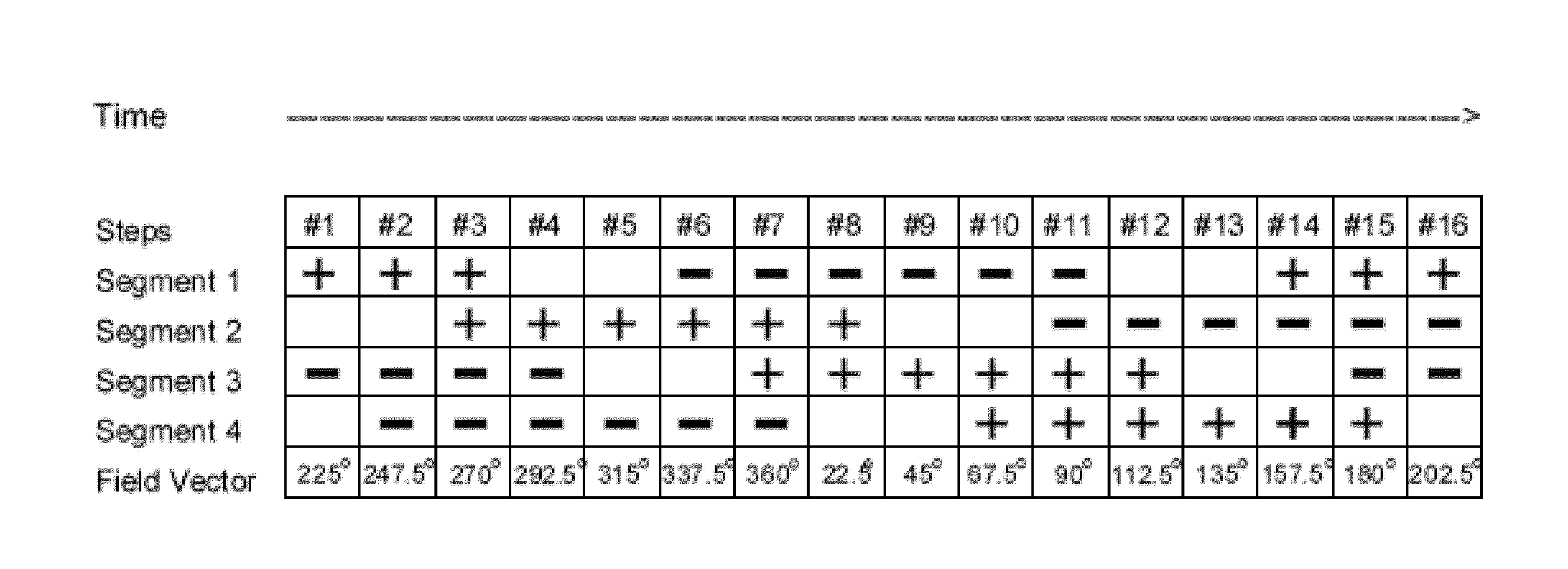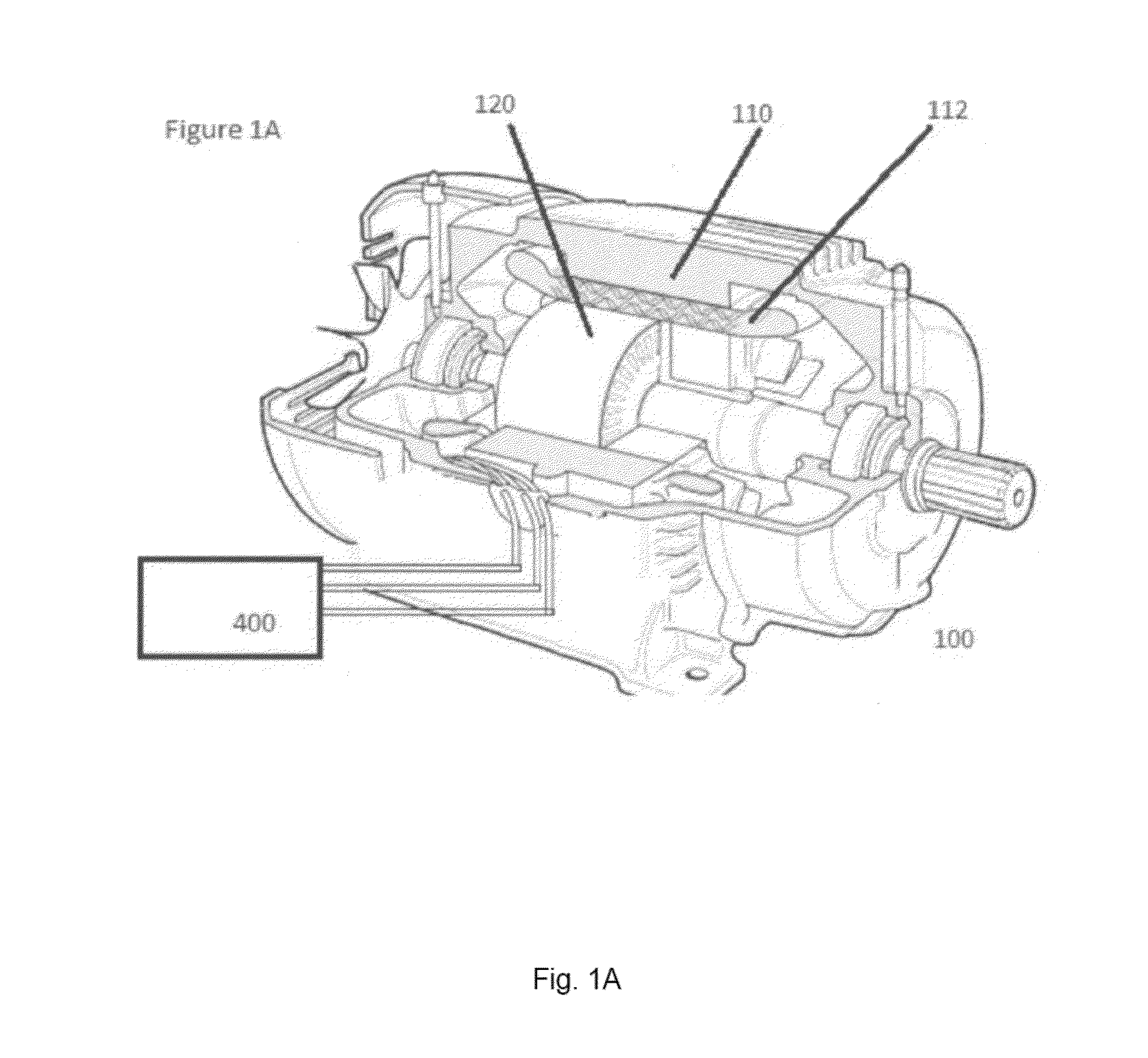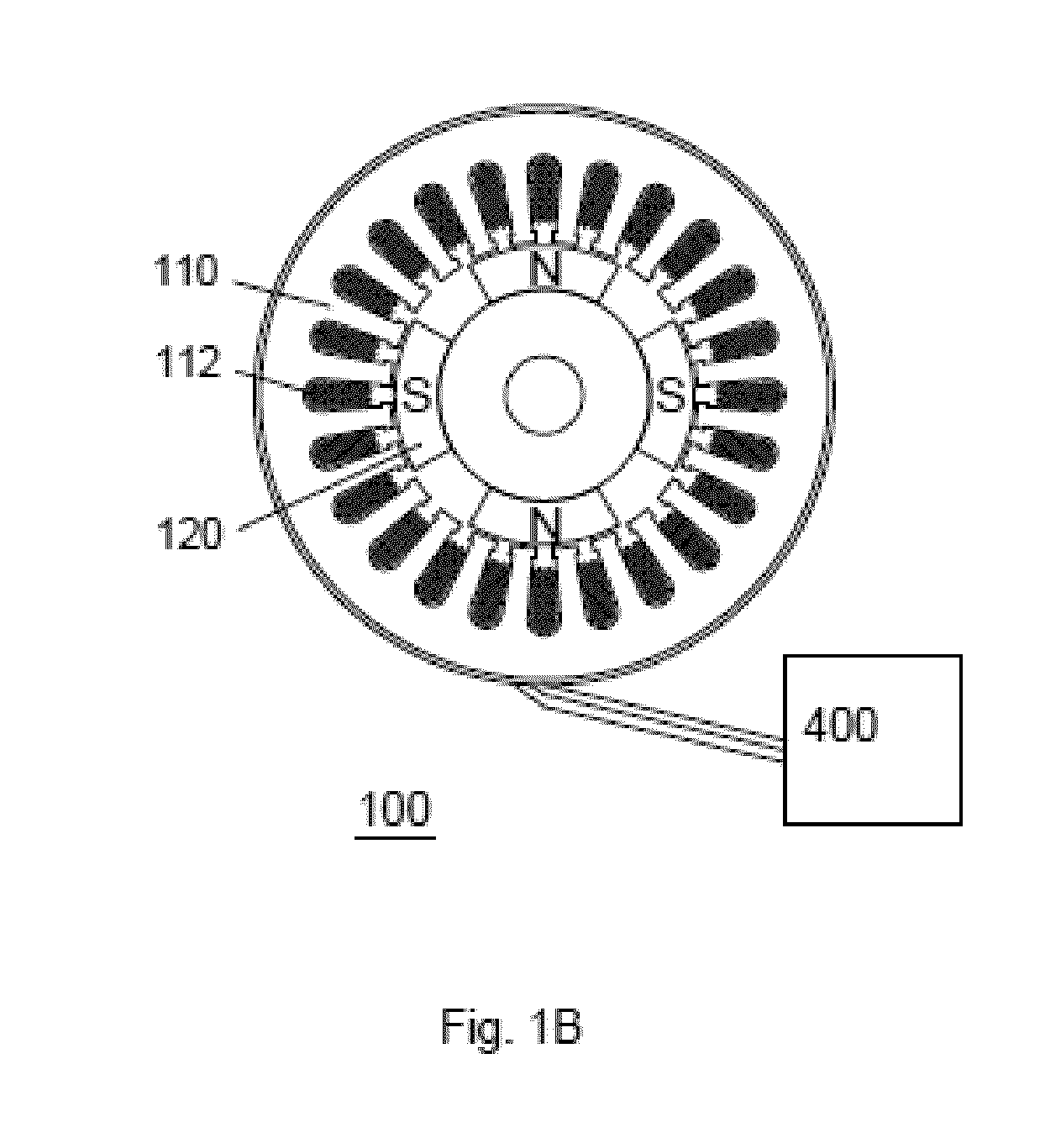Electric motor, generator and commutator system, device and method
a technology of commutator system and electric motor, which is applied in the direction of windings, dynamo-electric components, and commutation monitoring, etc., can solve the problems of rotors that are not always perfect, not always easy to fit, and various types of inefficiency in ac electric motors and other devices
- Summary
- Abstract
- Description
- Claims
- Application Information
AI Technical Summary
Benefits of technology
Problems solved by technology
Method used
Image
Examples
Embodiment Construction
[0056]In contrast to AC motors, DC electrical motors don't have a “natural commutator”. To operate a DC electrical motor, the DC current passing through the various coils of the DC motor must be varied using various types of commutator devices. In some DC electric motor designs, the stator may incorporate either permanent magnets or non-switched electromagnets (e.g., non switched stator coils), and instead the magnetic field of the rotor may be varied by a function of time, usually by switching the direction of current flowing through the windings of the various rotor coils.
[0057]In some alternative DC motor designs, a rotating magnetic field is generated on the DC electric stator instead. In these designs, the motor stator generally comprises various coils (each coil usually formed from multiple wire windings). The motor stator can be operated by sequentially switching or commutating the direction of the current flowing through the windings of the various motor stator coils in a ma...
PUM
 Login to View More
Login to View More Abstract
Description
Claims
Application Information
 Login to View More
Login to View More - Generate Ideas
- Intellectual Property
- Life Sciences
- Materials
- Tech Scout
- Unparalleled Data Quality
- Higher Quality Content
- 60% Fewer Hallucinations
Browse by: Latest US Patents, China's latest patents, Technical Efficacy Thesaurus, Application Domain, Technology Topic, Popular Technical Reports.
© 2025 PatSnap. All rights reserved.Legal|Privacy policy|Modern Slavery Act Transparency Statement|Sitemap|About US| Contact US: help@patsnap.com



